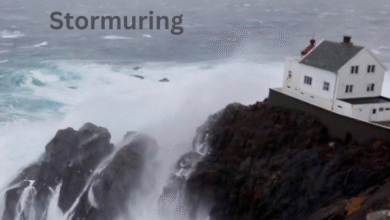Speciering Understanding the Process of Species Formation

Biodiversity is one of the most amazing aspects in life on earth. Such diversity of forms manifests in both microscopic creatures and elephant-sized giants, but a basic process called speciering—the creation of new species—underlies this variation. In evolutionary science, speciering is critical to the knowledge of how life adapts, evolves and survives in the ever-changing environment. This paper examines the phenomenon of speciering, what it entails, how it happens, why it is important, and how it, and is still continuing to, affect the future of life on earth.
Table of contents
What is Speciering?
Speciation or speciering is the process in which a population splits and produces new species. Biological definitions define a species as a collection of organisms, capable of interbreeding with each other to produce fertile offspring. When populations are separated, physical, genetic or behavioural changes may arise that cause people not to be able to reproduce with each other. Physically, genetically and behaviourally isolated populations cannot interbreed. These struggles will eventually create an all new breed of species. Specierism is popularised by Charles Darwin and is built into the evolutionary theory. His findings regarding the Galapagos Island finch life were a pioneering step towards the idea that different species would develop differently under different conditions and resources.
Why Speciering Matters ?
Speciering does not just happen to be a scientific curiosity, but rather it is the process that can explain the vary richness of life on Earth. Its absence in the ecosystems would confer low levels of diversity, resiliency, and adaptation. Any new species is a collection of experimentation, differences in genetic make up are tested against its environment.
The value of speciering is evinced in:
- Biodiversity: Diversity = Healthier ecosystems. More species results in complex food webs and ecosystems are more balanced.
- Adaptation: The formation of species can make life adapt to the changes present in the environment and these include the changes brought by climate change and habitat destruction.
- Human relevance: Knowledge of speciering can be applied in medicine to know how to avoid certain things that may affect the growth of organisms negatively. In agriculture, and conservation biology, speciering can help in prognosis of the outcomes of the pressure put on organisms.
Benefits of Speciering
Greater Interaction and Relatability
Tribune Headline 2025 more content-resonant and interesting (30 percent), and specifiable. It is able to eliminate the frustration of impersonal communication, by meeting the specific needs of the audience, communicating with people who want to change something, marketers and teachers.
Reduced Resource Waste
Targeting high potential audiences will be time and cost-saving. A study WordAgents 2025 conducted revealed that one in every five specifiers campaigns seen reduces cost, or is handling hobbyist and inefficient small business uses.
Building Trust and Loyalty
One-on-one communication creates trust. With assistance of bespoke campaigns, a report commissioned by Composely estimated that 35% of the flooded industries with trust concerns would remain by 2025.
The Processes of Speciering
Biologists have known only a few mechanisms through which speciering arises. The kind of barriers isolating populations and how they change over time determine these processes.
Allopatric Speciering
This is the most widely used kind of speciering. It arises when the communities are spatially isolated due to mountains, rivers or distance. Genetic divergence emerges when genetic distinctions accumulate in what was previously a single species, causing reproductive incompatibility. The finches of the Galapagos are the typical allopatric speciering example.
Sympatric Speciering
In sympatric speciering new species appear in the same geographical space. This is usually done by ecological specialization or genetic mutation making them not to interbreed. A good illustration was that of some fish species in the African lakes where food habits and mate preferences differ.
Parapatric Speciering
This is seen when populations are partly divided and occupy not quite the same environment. They might interact a little, but due to variation in environment and pressure they push the populations apart.
Peripatric Speciering
As opposed to allopatric speciering but of a smaller order, peripatrization occurs where a small group is isolated at the periphery of the range of a larger population. Genetic drift is an important cause because this group is small.
Genetic Basis of Speciering
Well in the middle of speciering is the situation of genetics. Divergent: Mutations, natural selection and genetic drift, as well as gene flow all contribute to a division of the populations. They accumulate small genetic differences over generations and these lead to the development of reproductive barriers after some generations.
An example could be a white flower and a blue flower:
They can be separated immediately by a change in the number of chromosomes that is already a speciering. PolyploidyAutomatic reproductive isolation is possible when there is polyploidy, and the organisms with the amplified sets of chromosomes are able to create isolation amongst the reproductive parents.
Living examples of Speciering in the Real World
Speciering is not only an ancient process laid beneath slumber in past evolution but a present and observable process.
- Darwin Finches: On the Galapagos Islands, finches adapted to suit the available food sources by developing differences in the shape of their beaks.
- Cichlid Fish: In the African Great Lakes, there are hundreds of different species of cichlid fish evolved through sympatric speciering, and adapted to very specific ecological niches.
- Apple Maggot Fly: This insect started feeding in apples, whose introduction by people caused separation between the apple-feeding and the hawthorn feeding fly populations.
These two illustrations show how speciering changes over time and how it constantly interposes itself on the creation of biodiversity.
Human impact on Speciering
People have turned into both unifiers and destabilizers in the speciering process. On the one hand, they include activity of habitat destruction, pollution and climate change, which endangers the existence of present species. Conversely, there are also things that human beings can do to speed up speciering.
Example
The urban environment forms a special ecosystem in which birds, insects, and plants adjust to life in the cities. Agriculture and domestication have also created and relied on thousands of new species and varieties over time. Having insights into human impact is essential in preparing conservation and ecological plans.
The Controversy Concerning the Definition of Species
- A complication in the study of speciering is the difficulty of defining what exactly a species is. There are many cases where the biological species concept-reproductive isolation-can be successfully applied, but there are still incidences like that of the Wolbachia bacteria that evolve in a different manner than biological speciation. Asexual organisms, hybrid species and ring species make the picture muddy.
- Such controversy indicates that speciering is far less a straightforward and unidimensional process but a multidimensional and dynamic phenomenon that must be studied with care within the biology, genetics, and ecology disciplines.
Beyond Biodiversity in a Boru
With climate change coming at an increasingly fast pace, it is possible that speciesing will therefore become central to which species continue to exist, and which will become extinct. By new species formation, some populations will be able to move into adaptation quickly and others will not. Conservation biologists are finding a way of encouraging the environment that allows speciering to take shape. Conservation of genetic diversity in current populations can be the genesis of new species in the future.
Conclusion
Not only is speciation a biological concept, it is the primary manner in which evolution occurs, and the reason why there is so much different life on Earth. Through the long evolutionary process species change to adapt to their environment, respond to the forces of selection, and ultimately, produce new forms of life. This cycle maintains healthy, adaptable and thriving ecosystems, even as the environment continues to face its challenges. The intricate interrelationship between natural selection and adaptation can be explained by studying the process of speciation. When the environment places pressure on small genetic changes, they can make a tremendous contribution to evolution. Speciation still affects our world, either by the introduction of new species of birds to new islands or by polyploidy resulting in more diversified plants.
FAQS
1. What is speciering and why is it important in evolution?
Speciering, also known as speciation, is the process by which new species emerge through genetic divergence and reproductive isolation. It is central to evolution, ensuring biodiversity, ecological resilience, and the ability of life to adapt to changing environments.
2. What are the main mechanisms of speciering?
The key mechanisms include allopatric speciering (geographic separation), sympatric speciering (species forming within the same habitat), parapatric speciering (adjacent but distinct environments), and peripatric speciering (small isolated groups). Each illustrates how natural selection and genetic drift shape species formation.
3. How does human activity influence speciering today?
Human influence is twofold: activities like habitat destruction and pollution can reduce the chances of speciering, while urbanization, agriculture, and domestication can create new conditions for adaptation and the emergence of novel species. Understanding this dynamic is vital for conservation biology and sustainability efforts.





